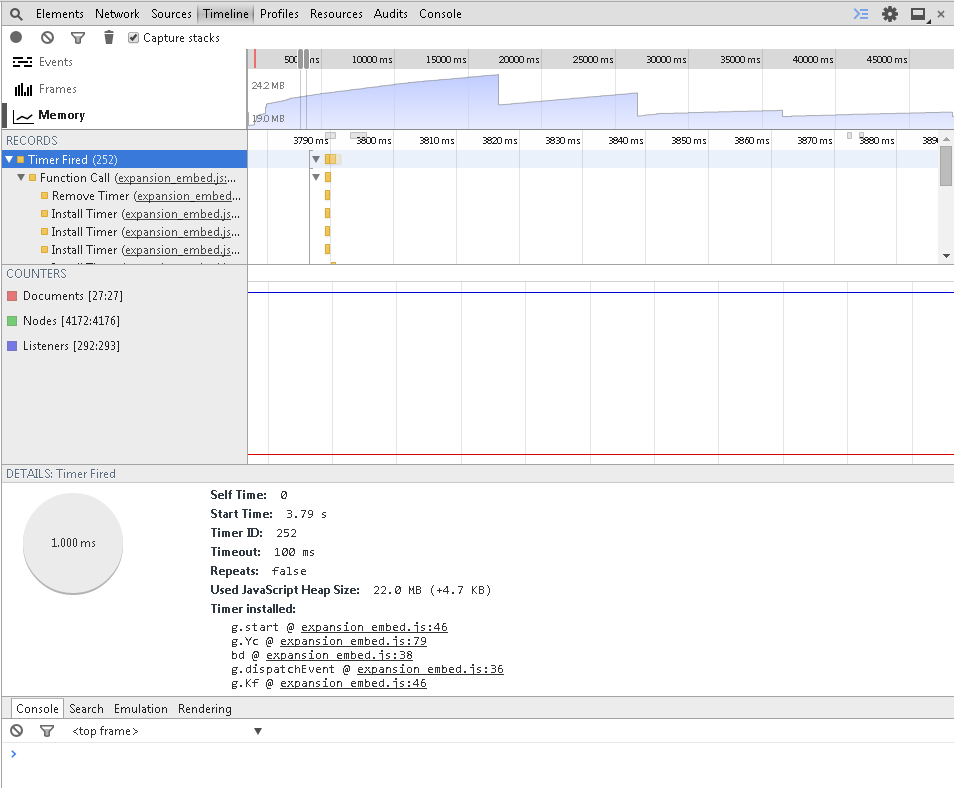
The examples in this article describe JavaScript's memory leak avoidance and memory management techniques, which are very practical. Share it with everyone for your reference. The specific method is as follows:
The content of this article comes from Google WebPerf (London WebPerf Group), August 26, 2014.
Generally speaking, efficient JavaScript web applications must be smooth and fast. Any application that interacts with users needs to consider how to ensure that memory is used efficiently, because if too much is consumed, the page will crash, forcing the user to reload. And you can only hide in the corner and cry.
Automatic garbage collection is no substitute for effective memory management, especially in large, long-running web applications. In this article, we will demonstrate how to effectively manage memory through Chrome's DevTools.
And learn how to fix performance issues like memory leaks, frequent garbage collection pauses, and overall memory bloat, the stuff that's really killing you.
Addy Osmani showed many examples of memory leaks in Chrome V8 in his PPT:
1) Deleting the properties of an Object will slow down the object (consuming 15 times more memory)
var o = { x: 'y' };
delete o.x; //此时o会成一个慢对象
o.x; //
var o = { x: 'y' };
o = null; //应该这样
2) Closure
When a variable outside the closure is introduced in the closure, the object cannot be garbage collected (GC) when the closure ends.
var a = function() {
var largeStr = new Array(1000000).join('x');
return function() {
return largeStr;
}
}();
3) DOM leak
When the original COM is removed, the child node reference cannot be recycled unless it is removed.
var select = document.querySelector;
var treeRef = select('#tree');
//在COM树中leafRef是treeFre的一个子结点
var leafRef = select('#leaf');
var body = select('body');
body.removeChild(treeRef);
//#tree不能被回收入,因为treeRef还在
//解决方法:
treeRef = null;
//tree还不能被回收,因为叶子结果leafRef还在
leafRef = null;
//现在#tree可以被释放了。
4) Timers leakage
Timers are also a common place where memory leaks occur:
for (var i = 0; i < 90000; i++) {
var buggyObject = {
callAgain: function() {
var ref = this;
var val = setTimeout(function() {
ref.callAgain();
}, 90000);
}
}
buggyObject.callAgain();
//虽然你想回收但是timer还在
buggyObject = null;
}
5) Debug memory
Chrome’s built-in memory debugging tool can easily check memory usage and memory leaks:
Click record in Timeline -> Memory:

I hope this article will be helpful to everyone’s learning of javascript programming.




